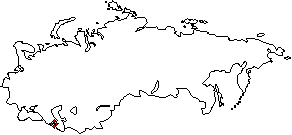CONTENTS
IntroductionForeword
Language Groups
Tribes and Dialects
Order the book
The Peoples
of the Red Book
Abazians (Abaza)Abkhaz
Aguls
Akhvakhs
Aleuts
Altaics
Aliutors
Andis
Archis
Asiatic Eskimos
Bagulals
Baraba Tatars
Bartangs
Bats
Bezhtas
Botlikhs
Budukhs
Central Asian Jews
Chamalals
Chukchis
Chulym Tatars
Crimean Jews
Crimean Tatars
Didos
Dolgans
Enets
Evens
Evenks
Georgian Jews
Godoberis
Hinukhs
Hunzibs
Ingrians
Ishkashmis
Itelmens
Izhorians
Kamas
Karaims
Karatas
Karelians
Kereks
Kets
Khakass
Khants
Khinalugs
Khufis
Khvarshis
Kola Lapps
Koryaks
Kryz
Kurds
Lithuanian Tatars
Livonians
Mansis
Mountain Jews
Nanais
Negidals
Nenets
Nganasans
Nivkhs
Nogays
Orochis
Oroks
Oroshoris
Peoples of the Pamirs
Roshanis
Rutuls
Selkups
Shors
Shughnis
Tabasarans
Talysh
Tats (Tatians)
Tindis
Tofalars
Trukhmens (Turkhmens)
Tsakhurs
Udeghes
Udis
Ulchis
Veps
Votes
Wakhs
Yaghnabis
Yazgulamis
Yukaghirs
visit the guestbook or mail comments to the webmaster

THE TALYSH (OR THE TALISHI)
Habitation. The Talysh live in the southernmost tip of Azerbaijan, along the Iranian border, mainly in the district of Lenkoran, Astarin and partly in Lerik and Massallin. The border bisects their traditional habitat, which continues into Iran, along the south coast of the Caspian Sea. Until quite recently there was no cross-border communication and so the Talysh evolved in two separate directions. One part of the Talysh of Azerbaijan lives in the mountains, where the climate is dry, the other part lives on the humid subtropical coastal lowlands, which as they extend north, gradually become the dry Mugani Steppe.
Population. According to the census of 1926, there were 77,039 Talysh in Soviet Azerbaijan. In 1959 they were counted as Azerbaijanis and this has been the case ever since. Nevertheless, the Talysh language was acknowledged as a mother tongue by 10,500 people in 1959. According to data from 1983, nearly 100,000 Talysh live in Iran.
The Talysh (Talishi) language belongs to the Iranian group of Indo-European languages. The nearest linguistic relatives are the Tatians and, in Iran, the Ghilanis and Masenderanis. There is no written language. The language of officialdom is Azerbaijani which is universally spoken.
The history of the Talysh has been researched only scantily. It is believed that the ancestors of the people were ancient aborigines of the Caucasus and that the region once belonged to the ancient Median realm. Later the region came under the supremacy of Persia. In the 5th to the 7th and especially the 11th to 13th centuries, the onslaught of Turkic tribes and resettlement into what later became Azerbaijan began. In the late 18th century, a Talysh Khanate was established which in 1812 (conclusively in 1828), together with the northern part of Azerbaijan, was annexed to Russia. The Soviet regime was established in Azerbaijan in 1920.
The economy of the Talysh was founded on land cultivation, especially grain (wheat and rice). The humid subtropical climate of the Caspian plain was well suited to growing rice. The cultivation of rice led to the forming of local Talysh culture (irrigation technology, women's work clothes, rice bread etc.). Because of a lack of suitable pastures, cattle-breeding was practiced only in a minor way. Other traditional branches of the Talysh economy were bee-keeping and silkworm-breeding.
During the Soviet period, after the Georgian Black Sea coast, this region was the second best for subtropical crops, and a large-scale projects for the cultivation of tea and citrus fruits and other thermophilic crops (e.g.laurel) were launched. At the same time, potato, tomato and tobacco growing became more widespread. Vegetable-growing was initiated, to supply Baku and other cities with early vegetables. All this work was done in kolkhozes. Industry was confined mainly to the coast and the town of Lenkoran. The Talysh had long-established links with Baku where, as early as the 19th century, they used to find employment in the oil industry and Caspian fisheries. Generally, however, those connections remained undeveloped and large-scale industrialization was incompatible with the Talysh' rural, almost feudal society.
Religion. The Talysh are Islamic (most of them Shiites, some Sunnites), which, in spite of the linguistic differences, led to close ties with the Azerbaijanis. So, on the one hand, the Talysh have long been under strong Azerbaijani influence which is vividly illustrated in their clothing and food. On the other hand the clothes worn by women on the rice paddies (shirt and shorts) were characteristically Talysh. A culinary speciality was kizme, thick boiled rice eaten instead of bread (this has now been replaced by Azerbaijani bread). More originality has been retained in Talysh architecture, probably as a result of the humid climate particular to their region of Azerbaijan. Barns on stilts, reed roofs, pillared porch (lyam) where a peasant family could take a rest in the hot period, are all characteristic of Talysh dwellings.
Talysh have no written language but, in the past, the Arabic alphabet was used when necessary. Schooling is in Azerbaijani and all Talysh are practically bilingual. Any native culture is limited to folklore.
During recent decades, Talysh were put under considerable pressure by the administration of the Azerbaijan SSR, whose aim it was to unite all minorities in the republic into one unified Azerbaijani people. This policy was relatively easy to act on with peoples of the Islamic faith, as they were simply proclaimed to be an ethnic group of the Azerbaijani people. This is borne out by the census policy which simply left several minorities of different languages unregistered. Therefore, the 1959 and following censuses do not mention the Talysh. It is interesting to note that this practice is very similar to the official policy of neighbouring Iran, where it is also frequently declared that there are no minorities (although more than 40 different nationalities inhabit the country), but only tribal groups of Iranians; thereby, all Islamic peoples are considered Iranians.
REFERENCES
- А. Г. Трофимова, Талыши. -- Народы Кавказа. Т. II, Москва 1962
IT
tabasarans | talysh | tats